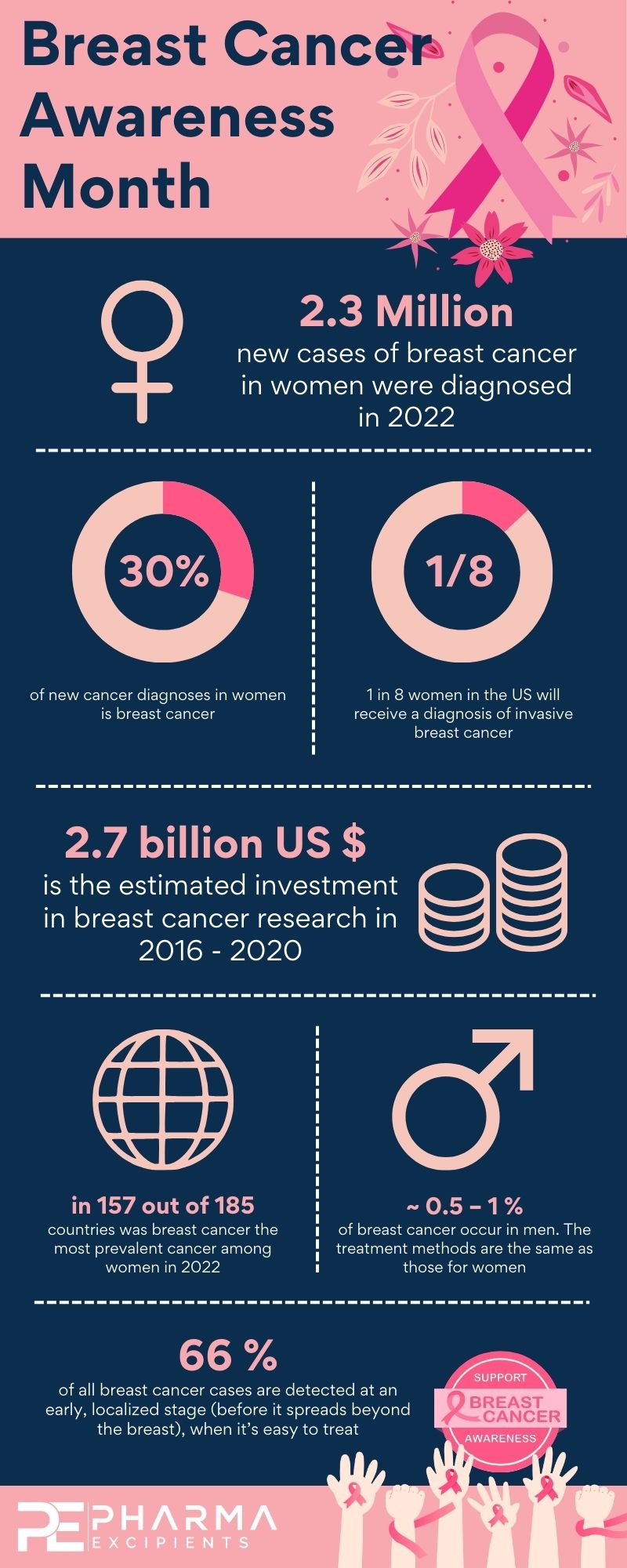Breast Cancer Awareness Month 2024

Breast Cancer Awareness Month is an international health campaign that takes place every October. The Breast Cancer Awareness Month aims to raise awareness about breast cancer, encourage early detection, and support research and treatment. The initiative was started in 1985 as a partnership between the American Cancer Society and the pharmaceutical division of Imperial Chemical Industries (now part of AstraZeneca).
Breast Cancer Awareness Month
October 2024
The female gender is the strongest risk factor for breast cancer. Around 99% of breast cancer cases occur in women and 0.5-1% of breast cancer cases occur in men. The goal of the breast cancer awareness month is to educate the public about the importance of regular screening (like mammograms), self-examinations, and early diagnosis, which can greatly improve the chances of successful treatment. Events during the month often include fundraisers, walks, pink ribbon campaigns, and educational activities to support patients and survivors and contribute to breast cancer research.
The Vision: Zero Deaths from Breast Cancer
 The pink ribbon is the universal symbol of breast cancer awareness. It was first introduced in 1991 by the Susan G. Komen Foundation when it handed out pink ribbons to participants in its Race for the Cure event in New York City. While it began in the United States, Breast Cancer Awareness Month has become a global campaign, recognized and promoted worldwide. Countries around the globe host events, fundraisers, and awareness initiatives in support of breast cancer awareness, research, and treatment. Many events during the month are focused on raising money for breast cancer research. This funding goes toward finding better treatments, potential cures, and improving patients’ quality of life.
The pink ribbon is the universal symbol of breast cancer awareness. It was first introduced in 1991 by the Susan G. Komen Foundation when it handed out pink ribbons to participants in its Race for the Cure event in New York City. While it began in the United States, Breast Cancer Awareness Month has become a global campaign, recognized and promoted worldwide. Countries around the globe host events, fundraisers, and awareness initiatives in support of breast cancer awareness, research, and treatment. Many events during the month are focused on raising money for breast cancer research. This funding goes toward finding better treatments, potential cures, and improving patients’ quality of life.

Facts about breast cancer
What is breast cancer?
What risk factors can affect breast cancer?
Various risk factors contribute to the cause of breast cancer. Some of these factors cannot be influenced, while we can actively control others, such as our diet.
Non-modifiable risk factors include gender, age, a genetically inherited high risk for breast cancer, dense breast tissue and personal history. Especially women are far more likely to develop breast cancer than men, though men can also develop the disease.
Modifiable risk factors include taking birth control pills, hormonal exposure, consumption of alcohol or tobacco, bad nutrition, low physical activity, overweight and work place hazards.
Signs & Symptoms
Some people have no symptoms, and the cancer is discovered during a screening mammogram or physical examination by a doctor. Anyway, understanding the signs and symptoms of breast cancer can make the difference between early and late diagnosis. If the cancer is detected at the earliest, localized stage, the relative 5-year survival rate for breast cancer is 99%. These signs include:
- New lumps or thickening in the breast, especially if in only one breast
- Nipple sores, change in shape of the nipple
- Nipple discharge or turning in
- Changes in the size or shape of the breast
- Skin of the breast dimpling
- Discomfort or swelling in the armpit
- Rash or red swollen breasts
- Ongoing pain that is not related to your menstrual cycle that remains after your period and occurs in only one breast

